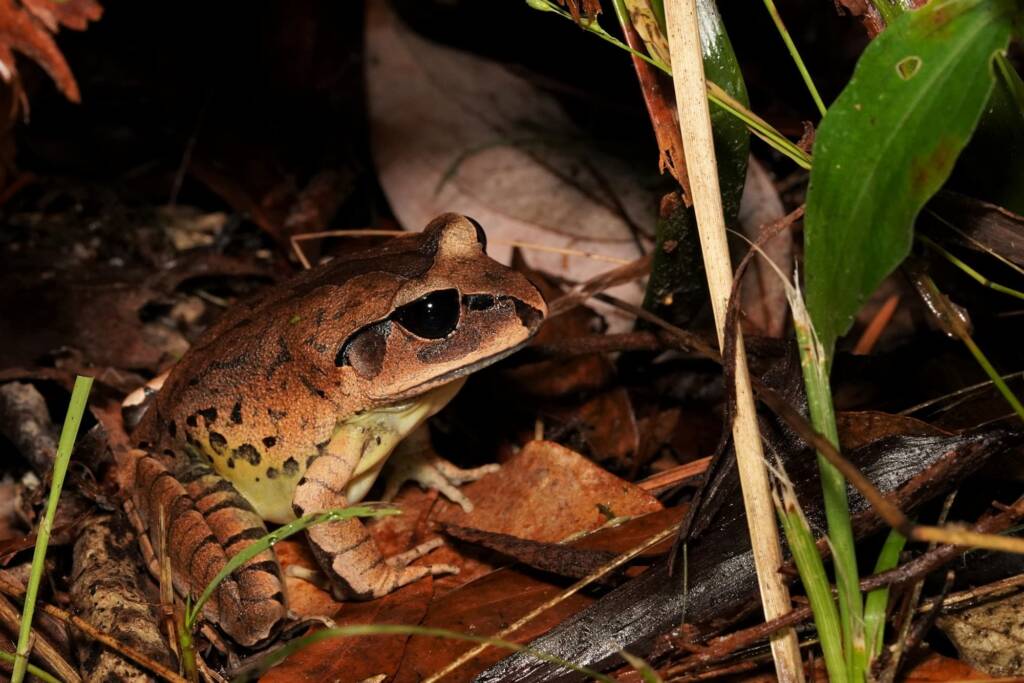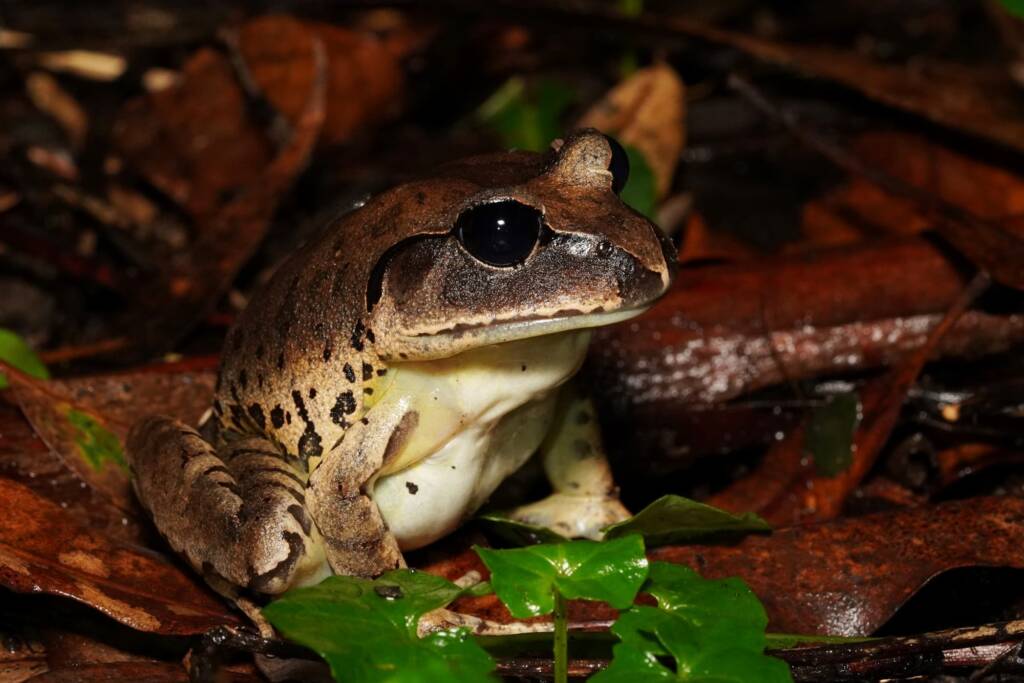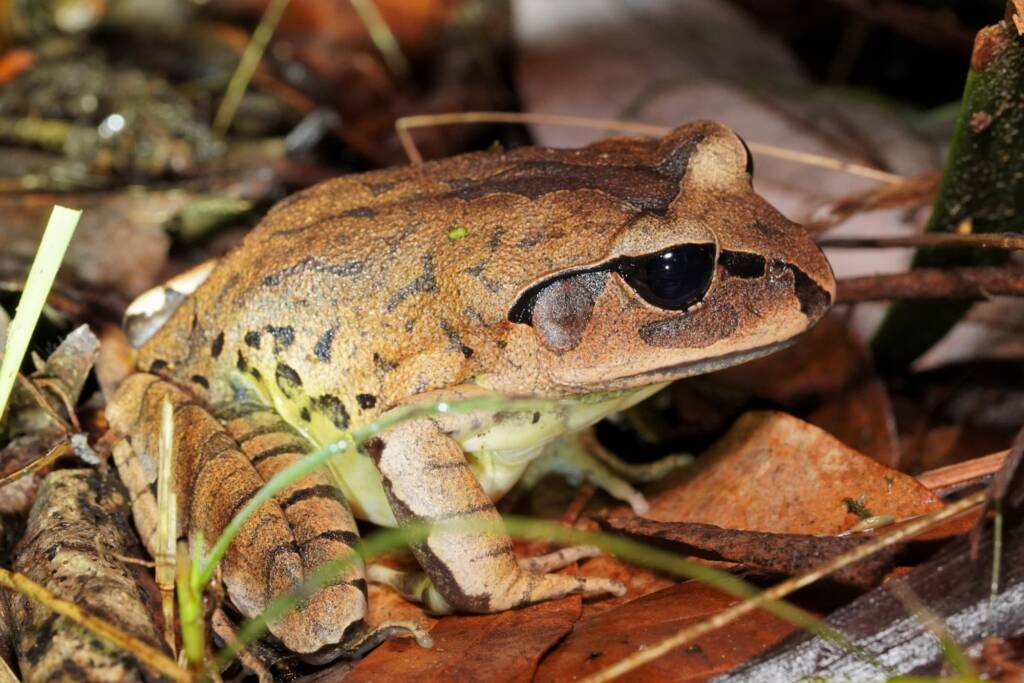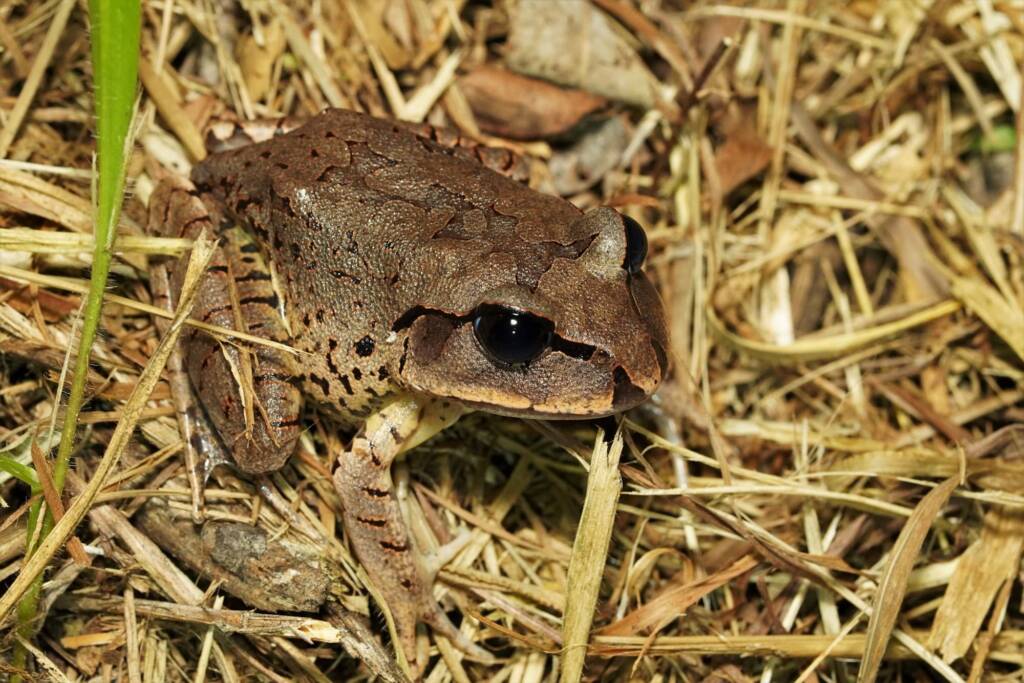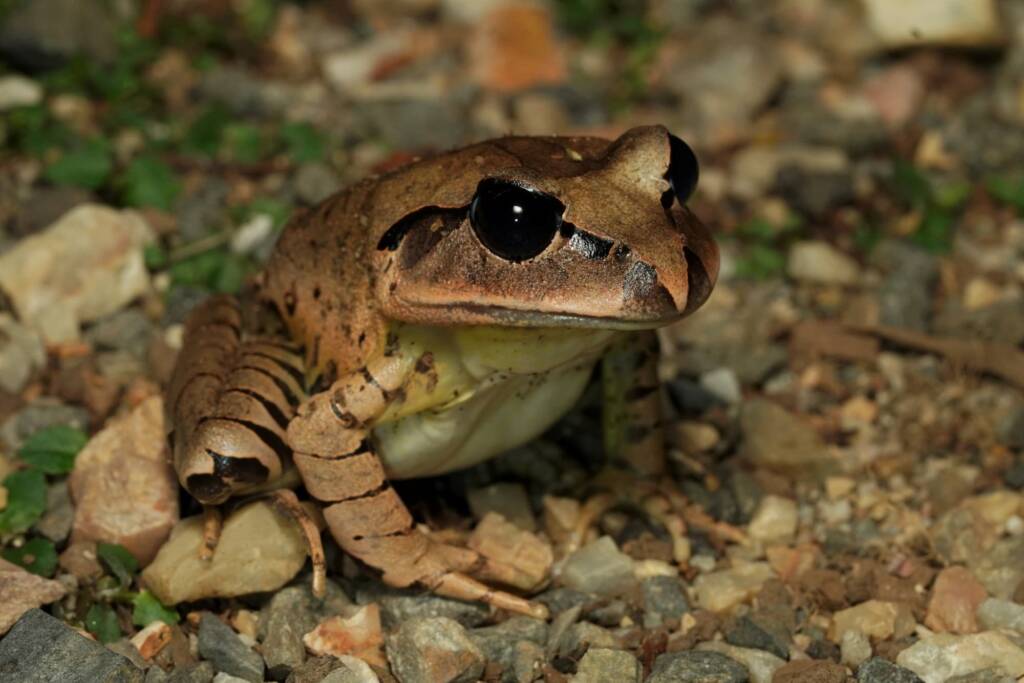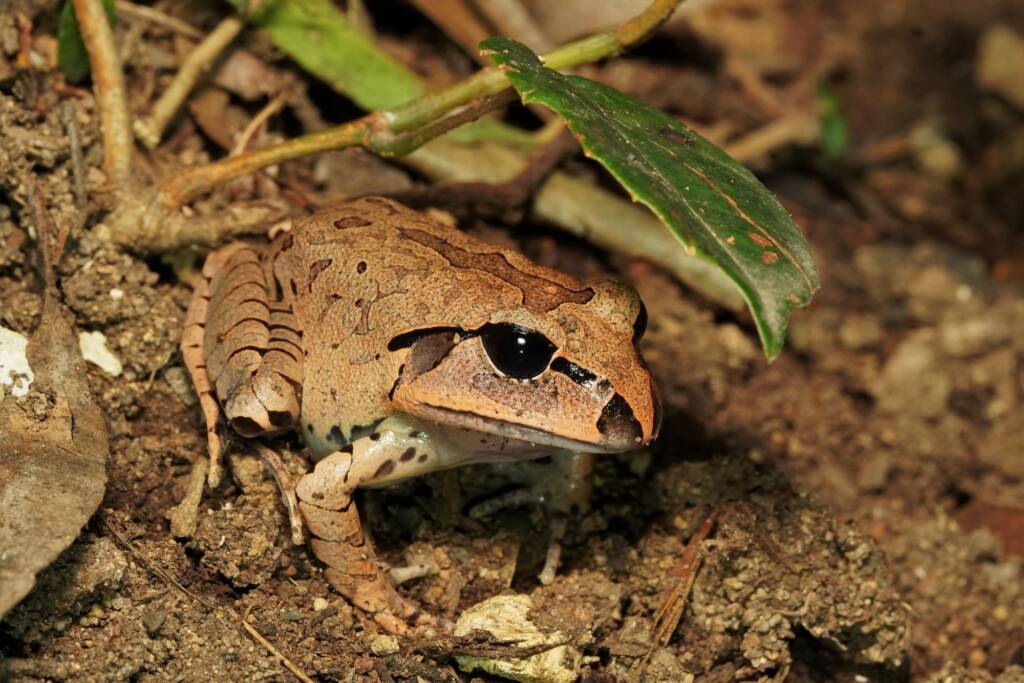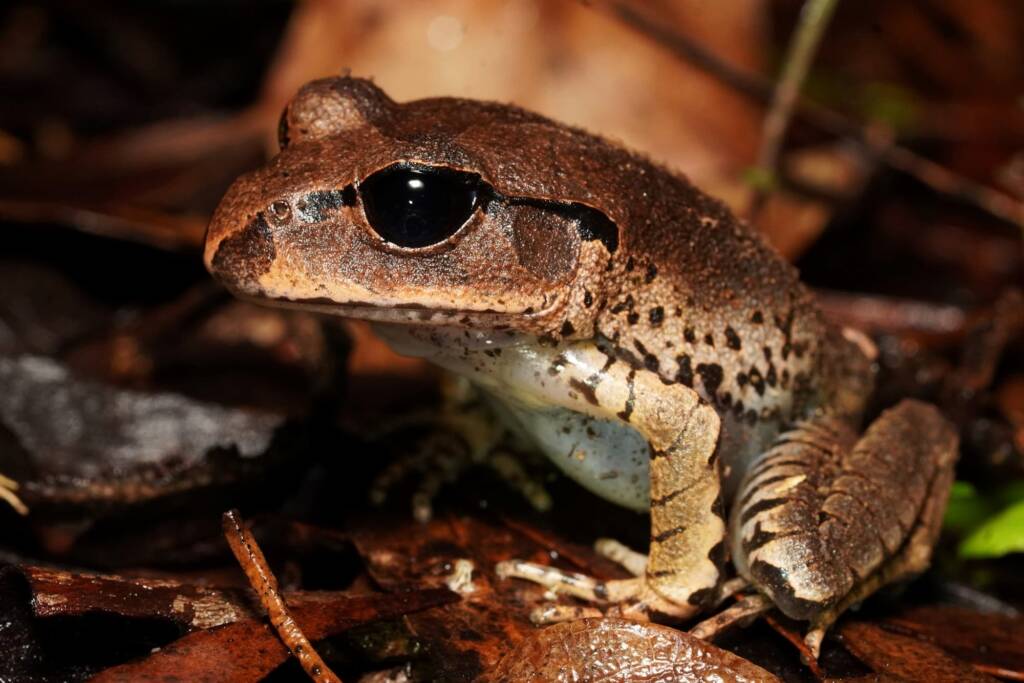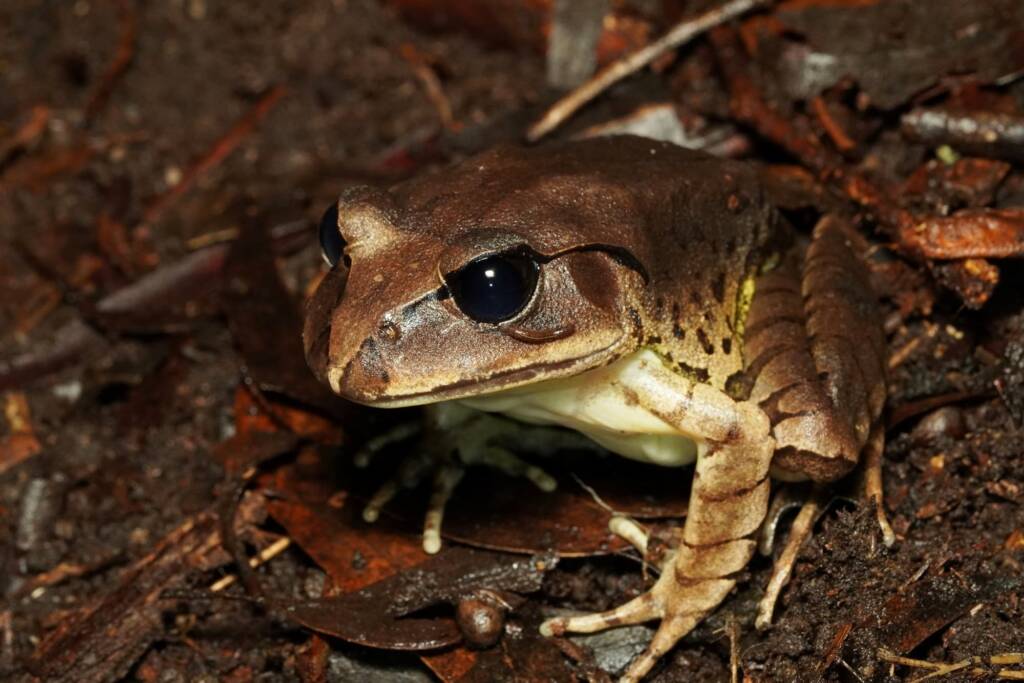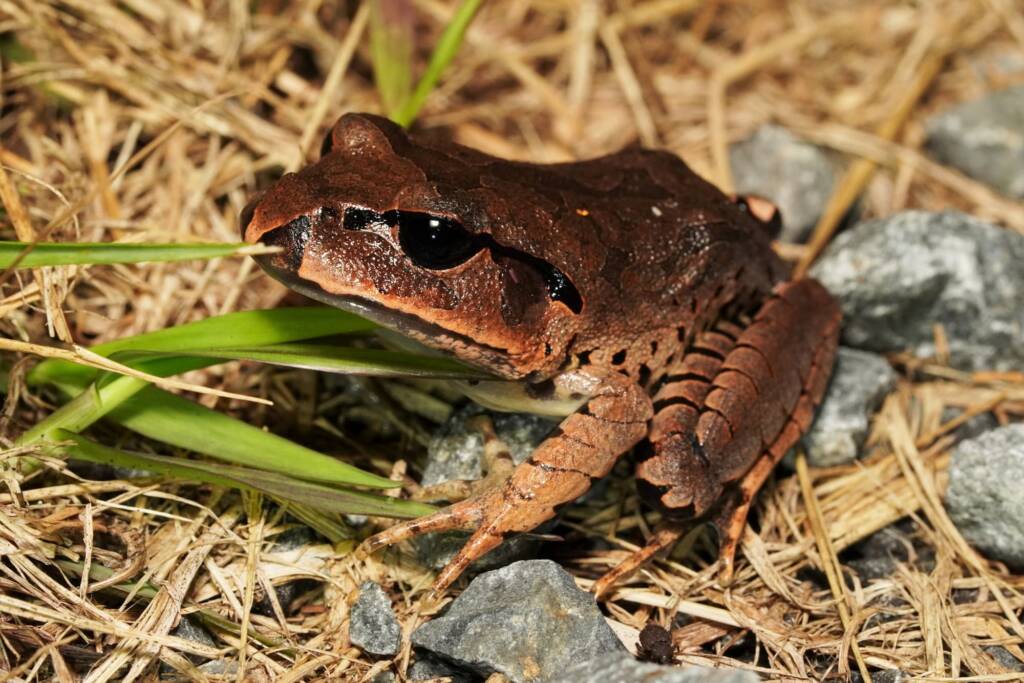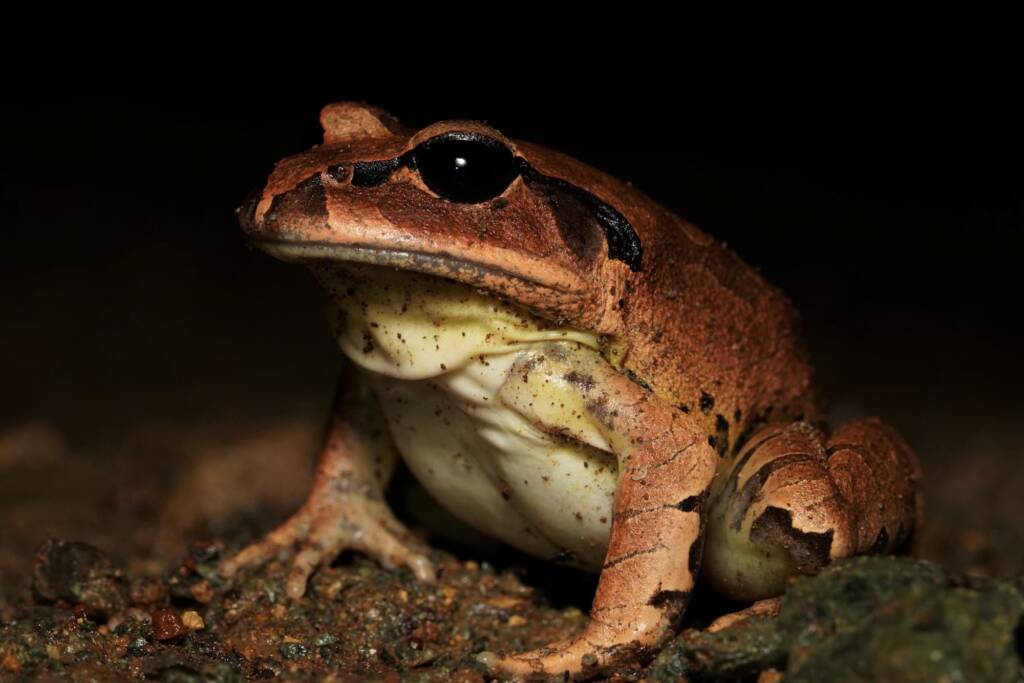FrogsAustralian Green Tree Frog (Ranoidea caerulea) Centralian Tree Frog (Ranoidea gilleni) Desert Tree Frog (Litoria rubella) Desert Trilling Frog Great Barred Frog (Mixophyes fasciolatus) Main’s Frog Long-footed Frog (Cyclorana longipes) Motorbike Frog (Ranoidea moorei) Peron’s Tree Frog Spencer’s Burrowing Frog
The Great Barred Frog (Mixophyes fasciolatus) is a common , ground-dwelling, large species of frog, growing up to 10-11 cm in body length. It has a wide geographic distribution that extends from mid-east Queensland to southern New South Wales.
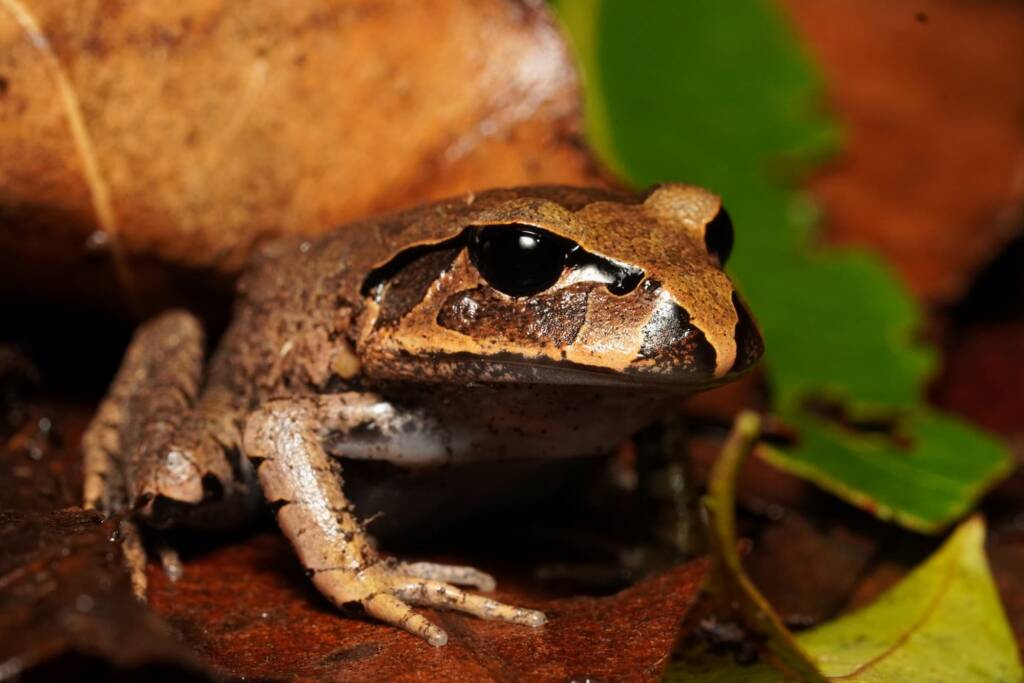
It has a tanned brown coloured body, that can be variable from a copper-brown, yellow-brown, brown black, with darker patches along the middle, that often can form a continuous thin strip, starting as a Y-shape at the snout, where there is a black triangular patch (on the tip of the snout). The stripe line then passes between to over the large raised eyes, and stopping behind the eardrum (tympanum).
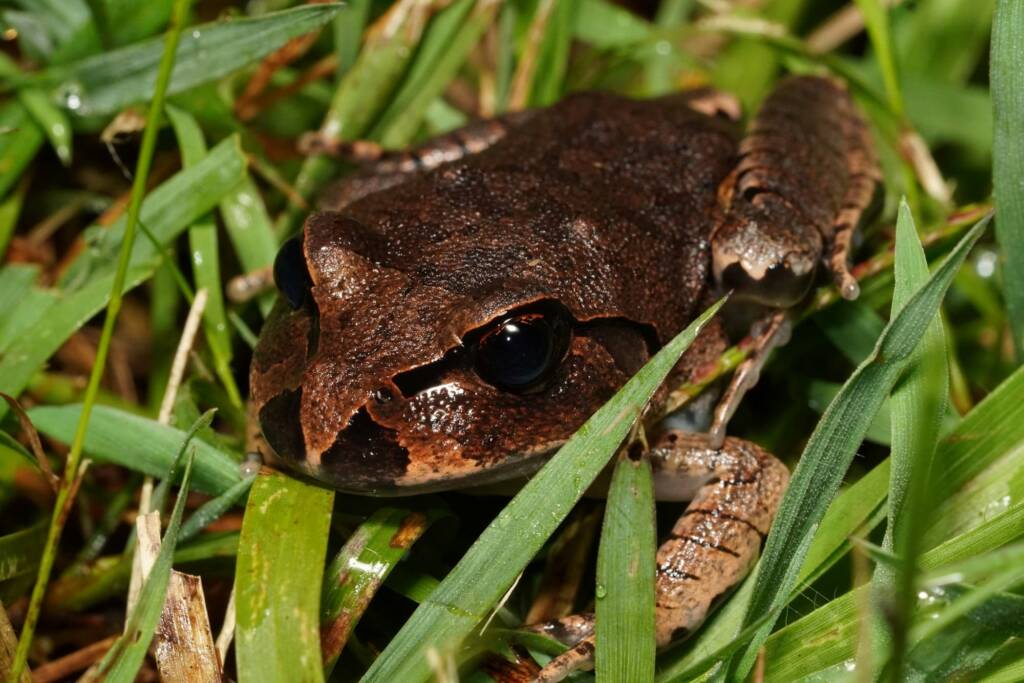
The sides of the frog are light brown to a cream coloured, usually with black spots, and the belly is white. The front and back limbs of the frog have dark horizontal bars. The fingers are unwebbed and the toes are three-quarters webbed, both without discs. The frog has pupil that is vertical, with dark brown iris.
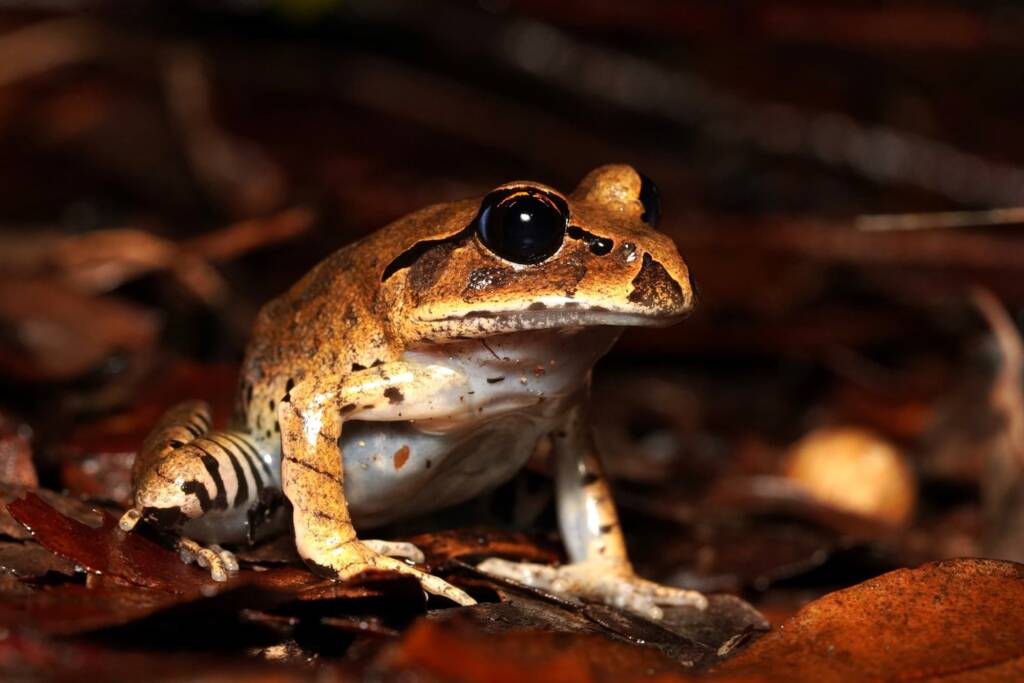
The frog is found in wet schlerophyll, tropical, subtropical and Antarctic beech rainforests along the Australian east coast. It is often found burrowing into leaf litter or loose soil during the day to avoid predators and keep moist. It usually emerges at night to hunt invertebrates.
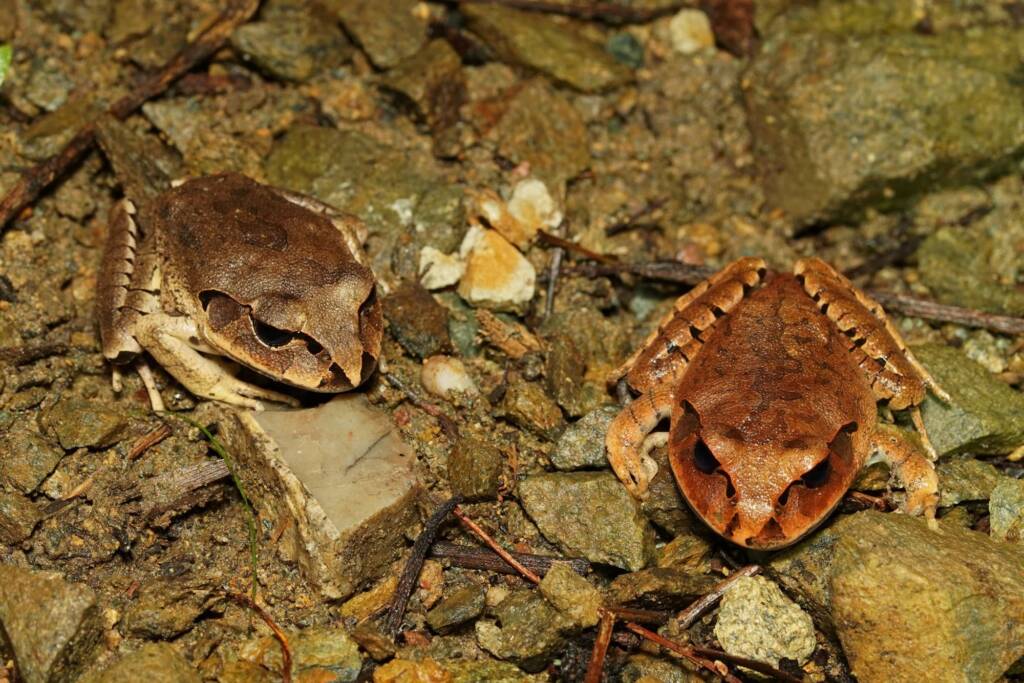
During spring and summer the Great Barred Frog can be found breeding, usually in running streams and ponds. After mating in the water, the female flicks the fertilised eggs onto the bank, where they often stick to the muddy banks and rock faces. This is to protect them from aquatic predators. The tadpoles hatch dropping back into the water, or in the next rainfall, the eggs are washed back into the water where they hatch to become tadpoles. They remain near and at the bottom of the water, taking about 12 months to develop into frogs.
They have a loud call “waark-waark-waark” that is followed by a softer, slow trill “bwaaark-bwaaark”.
- Scientific classification
- Kingdom: Animalia
- Phylum: Chordata
- Subphylum: Vertebrata
- Class: Amphibia
- Order: Anura
- Superfamily: Myobatrachoidea
- Family: Myobatrachidae
- Genus: Mixophyes
- Species: Mixophyes fasciolatus
Footnote & References
- Photographs Great Barred Frog (Mixophyes fasciolatus) © Simon Begg
- Frogs And Toads Identification Australia, https://www.facebook.com/groups/2004865429729155/
- Great Barred-Frog Mixophyes fasciolatus, iNaturalistAU, https://inaturalist.ala.org.au/taxa/22066-Mixophyes-fasciolatus
- Mixophyes fasciolatus, Great Barred Frog, https://www.frogid.net.au/frogs/mixophyes-fasciolatus
- The distribution and habitat requirements of the great barred frog (Mixophyes fasciolatus), by Kirsten M. Parris, Wildlife Research, Wildlife Research 29(5) 469 – 474, Published: 30 December 2002, CSIRO Publishing, https://www.publish.csiro.au/wr/wr01107
- Great Barred Frog, Australian Museum, https://australian.museum/learn/animals/frogs/great-barred-frog/
FrogsAustralian Green Tree Frog (Ranoidea caerulea) Centralian Tree Frog (Ranoidea gilleni) Desert Tree Frog (Litoria rubella) Desert Trilling Frog Great Barred Frog (Mixophyes fasciolatus) Main’s Frog Long-footed Frog (Cyclorana longipes) Motorbike Frog (Ranoidea moorei) Peron’s Tree Frog Spencer’s Burrowing Frog

